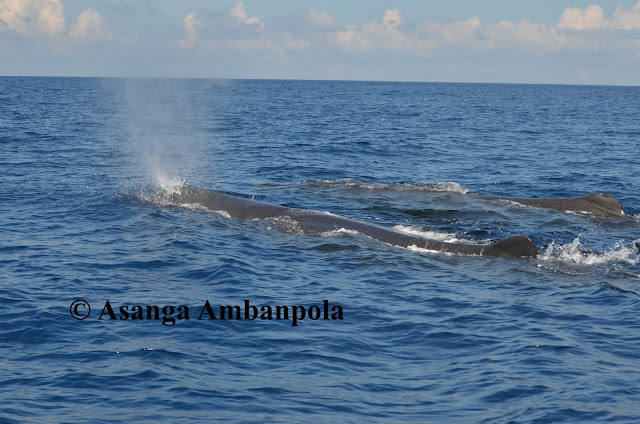 |
| Perth, Australia. The materials used for land reclamation, included general household rubbish. |
Obviously I am critical of Garbage of Colombo shipped to a Landfill in the Wilpattu Buffer zone or for that matter to any interior part of the Sri Lanka. This is simply because the large amount of toxic chemical leachate (7 bowser loads, every day for at least 20 years) is trapped in an enclosed environment. (See Colombo Garbage to Wilpattu and Update: Colombo Garbage to Wilpattu)
In the case of the Wilpattu Buffer zone site, the leachate is trapped in the Kala-Oya/Lunu-Ela Estuary Complex and the Puttalam Lagoon. Tidal currents are clockwise (Coriolis force) in the Northern hemisphere. That means all the toxic chemicals are going to flow toward Puttalam town, and the longer the water stays (residence time), more of the chemicals will settle on to the bottom. These will then eaten by various organisms (shrimp etc) and end up in the bigger fish (food chain). The worst case is that all the chemicals use up all the oxygen (eutrophication) in the south end of the Lagoon. Then all fish will die, the lagoon covered with algae and a stink to high heaven (think Bolgoda in Colombo).
Any landfill site in the interior of Sri Lanka will similarly trap the leachate in groundwater sources for years in the future.
So what are my suggestions.
- Use the garbage to create Landfill for the proposed Colombo Port City
I am well aware that the leachate is going into the ocean. However, it is a much better choice than the leach contaminating and getting concentrated in closed environments such as Kala-Oya-Puttalam Lagoon system or groundwater in the interior of the country.
JFK and La-Guardia Airports in NYC were built using garbage as Landfill. However, they are an environmental disaster a) because wetlands were filled up b) as the leachate continues to seep into enclosed water bodies. In the case of JFK Airport into Jamaica Bay and La-Guardia into Western Long Island Sound.
Japan and the Netherlands and Perth Australia, seem to have better results, i.e. lesser concentration of leachate because the land reclamation has been bordering in open ocean. Also see Land Reclamation for more examples. - Create blocks of garbage and cement to create artificial reefs and sea -walls where erosion is an issue.
Charitha Pattiarachi of Uni of Western Australia created an artificial reef for surfing at Cable Station near Perth (I like the "In her study, Pattiaratchi", presumably because of the Charitha. Pattiaratchi is 6 foot plus, Royal College swimmer and was a bouncer in a London Night Club, while a university student).
Imagine that, a surfing spot off Colombo Port City. - Use waste plastic and burned garbage to create plastic lumber.
See Waste Reduction and Management Institute at School of Marine and Atmospheric Sciences at Stony Brook University for recycled plastic lumber and construction material comprised of municipal solid waste combustor ash and concrete. They have been doing this since 1987.































